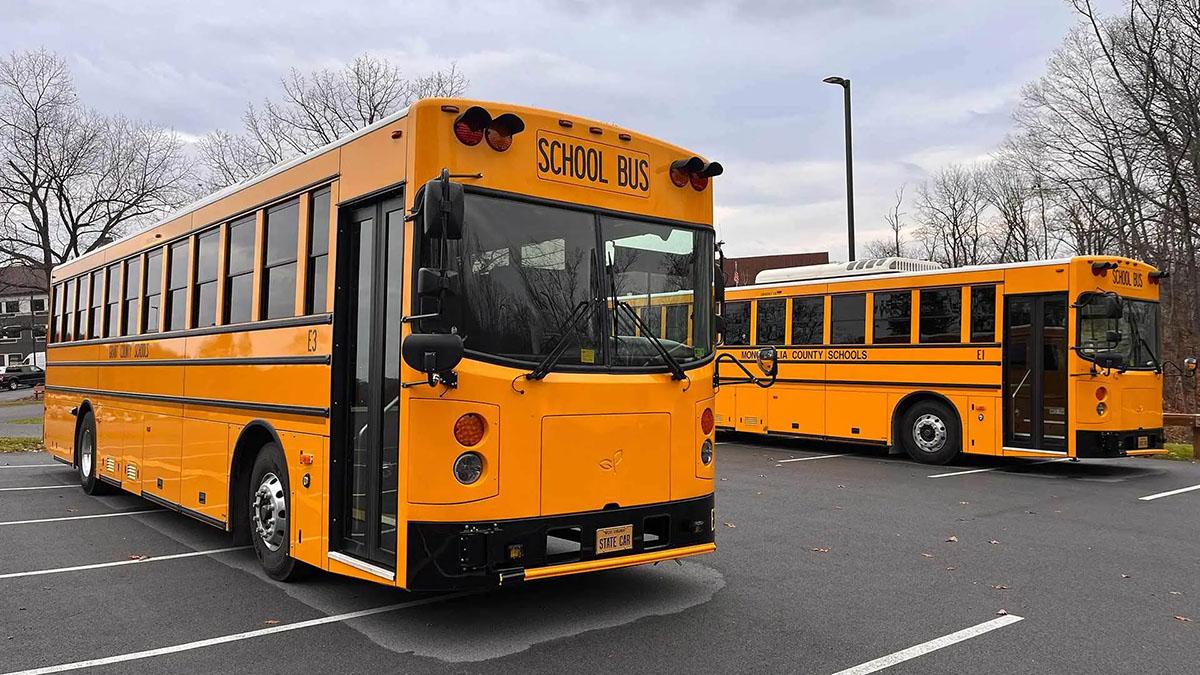The story originally appeared in Maryland Today.
Federal grant money available for emissions-cutting projects could be a windfall for local governments looking to go green—if the applications didn’t look so much to municipal staffers like billows of red tape.
“Federal grants are no fun when you feel like an office of one,” said Cheryl DeBerry, broadband and energy manager for Garrett County in Western Maryland. “We wear a lot of hats here. And as a small county, we need this funding to make these projects possible.”
A new program announced last week and administered by University of Maryland’s Environmental Finance Center (EFC) will help cash-strapped and lean-staffed local governments land this funding to launch waste-to-energy programs, dispatch electric school buses and institute other initiatives to reduce their carbon footprint. Supported by up to $500,000 from the Maryland Department of Environment, the Maryland Local Government Climate Action Support program will provide guidance and technical support to small and rural local governments.
“There is a lot of money available to address these environmental and climate change challenges and to implement projects that can make a big impact in these communities,” said Brandy Espinola, climate and sustainability program director at the EFC. “This program will keep track of what’s out there and help local governments walk through the grant process from start to finish.”
It will target governments in 12 rural counties in Western and Southern Maryland and on the Eastern Shore, and compliments the federal Climate Pollution Reduction Grants program, which is providing $3 million in climate planning support across the state over the next three years. It advances the state’s goal of reducing greenhouse gas emissions by 60% from 2006 levels by 2031, achieving 100% clean energy by 2035 and reaching net zero emissions by 2045.
The landmark 2021 Bipartisan Infrastructure Law and the 2022 Inflation Reduction Act have spurred an unprecedented investment in climate action infrastructure nationwide in the form of new programs that put dollars in the hands of local governments for sustainability projects, said Allison Tjaden M.P.H. ’12, special projects manager for the Maryland Department of the Environment. But for many local governments, identifying the right funding opportunities isn’t always easy.
“There are a lot of opportunities being rolled out by the federal government, and it became clear to us that it was dizzying for our local governments,” said Tjaden, who worked in sustainability-focused roles at UMD for over a decade. “And there is a short window of time to take advantage of these opportunities.”
Actions that spur climate mitigation in rural counties sometimes look very different than in their urbanized counterparts, she said. For Garrett County, federal grant money could promote healthier forest and tree cover, removing diseased and dead trees and turning them into clean burning energy through a biomass system. Other projects could include retrofitting septic systems or establishing incentives for soil conservation, which helps with greenhouse gas reduction.
Housed in the School of Architecture, Planning and Preservation, the EFC has a longstanding relationship with the Maryland Department of Environment, assisting local communities through its Stormwater Financing and Outreach Unit. Its expertise, said Tjaden, will be critical in helping communities creatively tap into funding opportunities.
“These communities’ challenges are unique but so are the opportunities,” she said. “And the EFC is poised to share lessons learned and work with government agencies collaboratively to create real impact.”
The new program, said Espinola, is akin to a “concierge service” for local governments, helping them identify the right grant opportunities, explore environmental sustainability priorities and write grants and seeing them through the full application process.
“We’re hoping for more transformative impacts than just one grant,” she said. “The idea is that hopefully through this process, we can help these counties continue to bring money into their communities to achieve their sustainability goals.”

